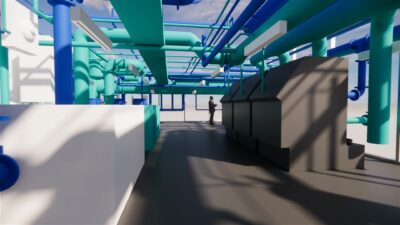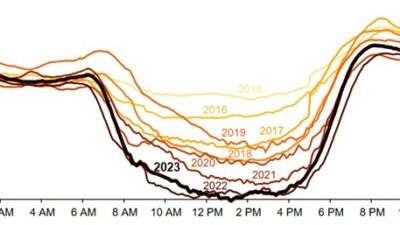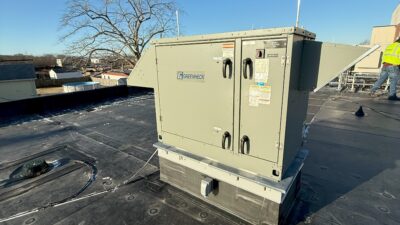NFPA 72: National Fire Alarm and Signaling Code technical committees have been busy reviewing and preparing revisions to the 2013 edition of the code that will ultimately be published in the 2016 edition. Here's a look at changes that may have a significant impact on fire alarm design.

Changes proposed for the 2016 edition of NFPA 72: National Fire Alarm and Signaling Code will continue to revise and clarify many of the new provisions that were added during the major revision that occurred between the 2007 and the 2010 editions. The proposed changes are intended to improve the 2013 edition of the code.
Why should you be concerned about what will be in the 2016 edition of NFPA 72, when you may not even be applying the 2010 edition yet? The 2010 edition is being applied in many jurisdictions as they adopt the 2012 edition of the International Building Code. The Centers for Medicare and Medicaid Services also has announced that it will be moving from the 2000 edition of NFPA 101: Life Safety Code to the 2012 edition of NFPA 101. The 2012 edition of NFPA 101 adopts the 2010 NFPA 72 by reference. Also, some federal government agencies such as the Dept. of Defense and U.S. General Services Administration (GSA) want the most current codes and standards applied to their projects. If you are working on federal projects, it is important to identify not only the applicable codes, but also the edition of the codes and standards that will be applied to the project.
While the 2016 edition won’t be applied on most projects for some time, there are a number of proposals that will clarify current requirements and can often be used to inform a current design. In some cases, it may be prudent to pursue use of new code requirements even if the new code has not been adopted. If new code requirements are used, the authority having jurisdiction (AHJ) should be consulted to confirm that it will accept the new provisions. New code requirements could be accepted under the equivalency provisions of the code.
If you are a fire alarm product manufacturer or installer, knowing what is coming down the road can also help you prepare for implementing the new code requirements that can impact product design or help you develop training material for your staff that design and install systems.
Some of the more significant potential changes are identified in this article. The Technical Committees met in June to review comments to the first draft report of the technical committees. The result of the meetings will be the Second Draft Report of the Technical Committees, which will be subject to public review before the code goes before the membership for approval at the June 2015 Annual Meeting.
Documentation requirements
During the development of the 2013 edition of NFPA 72, Chapter 7 was added to consolidate the requirements for documentation. Revisions to these requirements are proposed for the 2016 edition. Minimum requirements for documentation are proposed to include:
-
Floor plans that are required to show room use and building features that will affect the placement of initiating device and notification appliances
-
Power loss calculations for amplifier notification appliances
-
Mounting height elevation for wall-mounted devices and appliances
-
Minimum sound pressures required to be produced by notification appliances in areas where notification of occupants is required
-
Pathway diagrams between control unit, supervising station, and shared communications equipment.
The minimum documentation is required to be provided only when made applicable by the enforcing authority. When it is required, it will need to include all of the items noted in NFPA 72 for minimum documentation. There may be numerous systems that may not have all the features noted in the minimum documentation. If a feature is not part of the system, it is not required to be documented. It should be understood that it is not the intent of the code to require additional devices or features based on this chapter.
A paragraph is proposed for the annex (A.7.2.1) to provide guidance on documentation when work is being done on existing systems. The committee statement incorporating this annex material indicates that with the permission of the AHJ, the documentation may only be applicable to the modifications, additions, and interfaces to an existing system.
Transient protection
A requirement was added in the 2013 edition of NFPA 72 that required all signaling system circuits entering a building to be provided with transient protection. This requirement is currently proposed to be removed from the code for the 2016 edition.
The justification for the requirement was to limit the impact of lightning or electrical surges on the fire alarm system. In the substantiation for eliminating the requirement, the technical committee notes that not all circuits that enter or exit a building are prone to lightning or surges.
Class N pathway designation
The new Class N pathway designation has the following performance characteristics:
-
It includes two or more pathways where operational capability of the primary pathway and a redundant pathway to each device shall be verified through end-to-end communication
-
A loss of intended communications between end points is annunciated as a trouble signal
-
A single open, ground, short, or combination of faults on one pathway shall not affect any other pathway
-
Conditions that affect the operation of the primary pathways and redundant pathways shall be annunciated as a trouble signal when the system minimal operation requirements cannot be met
-
Primary and redundant pathways shall not be permitted to share traffic over the same physical segment.
This new material was developed to address issues with the use of Ethernet and other non-fire mass notification system (MNS) networks.
Class N pathways are also proposed to be subject to the same physical installation requirements as Class A and X circuits regarding separation of primary and redundant circuit paths.
Survivability
Chapter 12 of the 2013 edition of NFPA 72 currently allows 2-hr performance alternatives for providing protection of fire alarm cable. The current language infers that any alternative to a 2-hr listed cable or 2-hr rated enclosure would have to provide 2-hr fire rated protection. The body of the code is proposed to be changed to allow a performance alternative to 2-hr fire rated protection. Annex material has been added to explain that strategic applications of Class A, Class N, or Class X circuits may be accepted as achieving the code required survivability. The application of redundant paths that would not be exposed by the same fire may achieve the integrity and survivability goals for a particular project. Performance-based alternatives would be subject to approval by the AHJ.
A couple of new exceptions are also proposed to be included in Chapter 24 regarding the level of survivability. An exception to allow Level 1 survivability is proposed when evacuation zones are separated by less than 2-hr fire rated construction and Level 2 survivability may have otherwise been required. Level 1 is also allowed when there are redundant paths that have a minimum separation within the zone based on the geometry of the evacuation zone. Level 1 allows wire in metal raceway in fully sprinklered buildings. Level 2 requires 2-hr protection of the circuits or 2-hr rated cable.
Elevator hoistway smoke detector installation
There is a proposed code change to Chapter 21 that will require smoke detectors that are provided in elevator hoistways to be installed in a manner that allows them to be tested and serviced from outside the hoistway. This will require installation within reach of an access door through the hoistway.
It is important to note that smoke detectors are required by NFPA 72 in elevator shafts only if the shaft is sprinkler protected or if the smoke detector is required to operate a normally closed vent. Elevator shaft ventilation is only required for certain occupancy types. Access doors will typically require a fire rating consistent with the code requirements for opening protection based on the fire resistance of the shaft.
Performance of signaling line circuits
A requirement had been added to the 2013 edition of NFPA 72 in Chapter 23 that limits the loss of no more than 50 addressable devices from any single fault on a signaling line circuit. A proposed code requirement would change this to prevent a single fault from causing the loss of more than one zone of addressable devices. Additional code and annex language also has been included to define zones for purposes of this requirement.
Risk analysis and looking ahead
Requirements for the risk analysis that is required for the design of MNS will be clarified based on proposed code changes. There are proposed code changes that recognize that a risk analysis may have been performed for a facility in order to develop an existing emergency response plan. The proposed code language recognizes that the risk analysis for the design of the MNS can focus on the communication requirements of an existing emergency response plan.
This article highlights a number of changes proposed for the 2016 edition of NFPA 72. These proposed changes are only a sampling of what I believe are significant and should not be considered to be the only proposed changes to the code. The code development cycle is less than half completed, so there may be significant modifications to the items noted above or more changes may be developed during the completion of the cycle.
Ray Grill is a principal with Arup. He has been a member of NFPA 72 Technical Committees for more than 30 years and currently serves on the Technical Committee on Notification Appliances, Technical Committee on Emergency Communications Systems, and the Technical Correlating Committee. He is also member of the NFPA Technical Correlating Committee for Automatic Sprinkler Systems and serves on the Technical Committee on Building Services and Fire Protection Equipment for NFPA 101/5000. He is a member of the Consulting-Specifying Engineer editorial advisory board.




